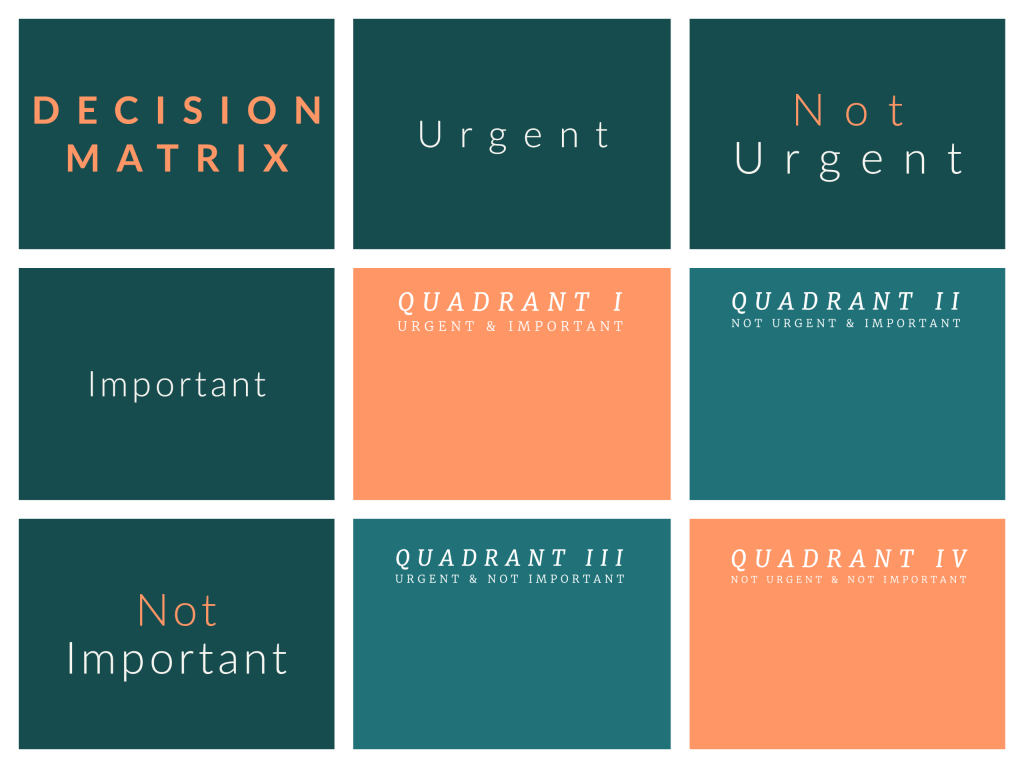How to Get Things Done When Everything Feels Important

It is not enough to be busy, so are the ants. The question is: What are we busy about?
Henry David Thoreau
We’re busier than we’ve ever been. How often have you talked to a friend about how busy you’ve been? How many important items do you have to get done? It’s one of those funny (not funny-haha) paradoxes. We have so many tools out there to help us but they never seem to help us feel more at ease.
(Over the past few months many of us really are busier than ever before. This post pertains to a non-Covid-19 world.)
Is Everything That Important?
How often have you run into a friend and asked how they are only to get the response “I’m so busy” or “I’ve got so much to do”? Or my favorite email response: “Sorry I didn’t get back to you sooner. Things have been crazy around here.”
I caught myself in that trap recently when I went to lunch with a friend I hadn’t seen in years. I walked in a couple of minutes late and (before I said anything else) I apologized about being late. Then I explained how I was so busy at work and how I never have time to do anything. As we spoke, he voiced some of the same concerns.
Be Ruthless With Your Time

First off, you’re not Genghis Khan, don’t be ruthless with the people around you. A recent study of office workers found that most workers only have about 72 minutes of uninterrupted time each day. Quick math – that’s only about 15% of an eight-hour work day. And it’s even less for people who don’t work typical hours.
When you understand how little time you actually have to work it’s easier to put things into perspective. With that in mind, you can ruthlessly decide on your top priority. Now you can focus on bigger-picture goals.
If you overestimate the time you have to get work done each day, you may also underestimate time leaks. Small time and energy leaks have bigger consequences than you probably realize. The time you spend finding your keys. The email you replied to immediately, even though you could wait. The perfect tweet that takes 10 minutes to craft (you know the one with the clever images and wordplay). These superfluous things can disrupt your flow and sap your energy. And the next thing you know, you’re waking up at three a.m. to get some time to yourself.
Make Use of Systems
By now, you’ve heard all the advice about waiting until a specific window to reply to non-urgent emails. This is one example of creating systems to save mental energy. But you can create systems for other tasks. Get a container for your keys so they’re always in the same place. Use a social media management program so you can set aside time to create multiple posts at the same time. If you write posts at the same time, you’ll notice that your Twitter zingers will be easier and more creative.
Creating systems will help you save time on infrequent tasks too. How often do you forget the steps it takes to do tasks you only do once a month or a few times a year?
For example, whenever I get low on printer ink I spend a few minutes looking for the ink code when I order it from Amazon. It’s only a couple minutes, but it throws off my groove and I have to spend time getting back to what I was doing.
I decided to create a system for it. Now I save the ink number on my computer (and Amazon remembers it for me too). I use a program called Stickies to create notes that I can find easily. There’s also a Windows version called Sticky Notes. Here’s a link to get it.
Priority Matrix
One famous system is the priority matrix. Popularized by Stephen Covey in his “7 Habits of Highly Effective People”, you divide your tasks into four quadrants.

The priority matrix is nice for visualizing the tasks you have to complete. That said, you need to be honest with your ratings. It’s easy to classify everything into Quadrant I but all your tasks are not Urgent & Important. One tip is to use the due date as one of the criteria for your ranking. The closer the due date, the higher the task on the priority matrix.
Relative Prioritization
Another way to organize your tasks is to rank them against each other. This is a version of the system Google uses to give you search results. They use thousands of factors to rank search results against each other. The data they use is the background information they can get from a website. When you rank your tasks you can use your background knowledge of the tasks to make your decisions.
Here are the steps you would take if you have 10 unique tasks.
- List all 10 tasks using a bullet list
- Assign each task a number based on the relative importance of the task. Use 1 for the most important and 10 for the least important.
- You can only use each number once.
- Dive in and start completing tasks.
A technology tip for relative prioritization is to use a program with a “Kanban” view that allows you to drag and drop tasks. Here are some recommendations.

What About Interruptions?
I know that many of you are saying that no matter the systems and tools you use, you can’t get away from interruptions.
Touché.
There are some ways to lessen the impact of unanticipated time-sucks. Adam Rosenfeld has a framework to help.
- Keep a notebook handy. I write interruptions down on a mind map.
- If they fall into the context of work, I set a to-do accordingly earliest for the next day – this day is already booked.
- If they require more involvement, I set a to-do to review the item during our weekly leadership meeting.
- If I can’t effectively respond in the moment (focused work, taking care of kids, resting), I ignore the interruption. If it’s really important, it’ll come back again.
Your time is valuable and you have a right to prioritize it however you want. You know enough about your work style and your task list to make decisions. So, whatever system you put into place, trust your instincts.

